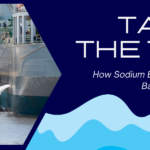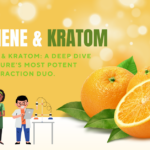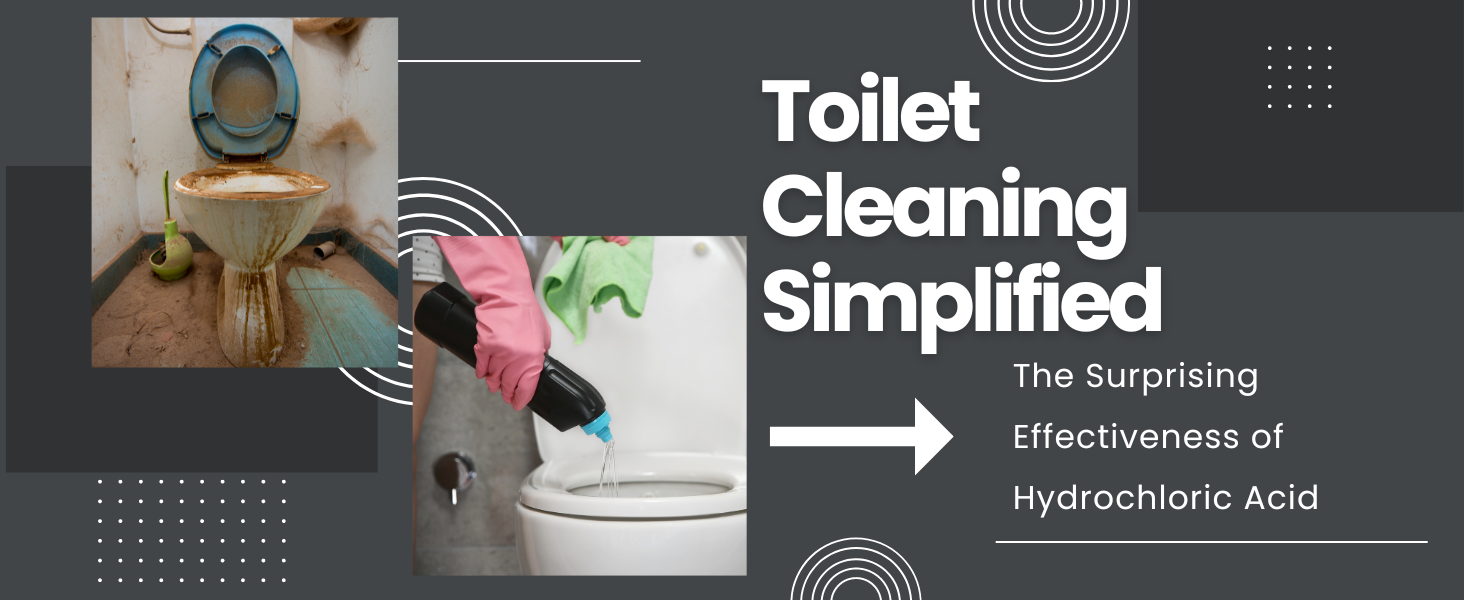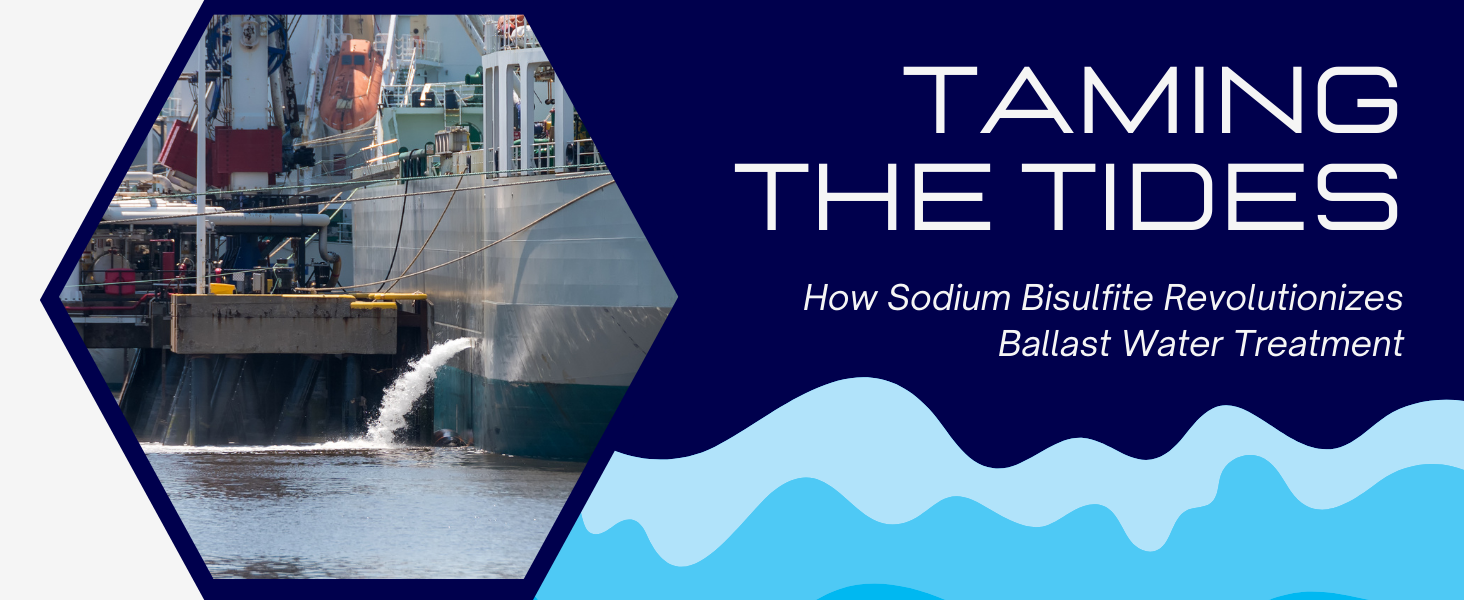
Mastering pH Balance: A Deep Dive into Chemical Adjustments and Practical Applications
Understanding pH is fundamental to many industries, from healthcare and beauty to agriculture and manufacturing. In the realm of water systems, like pools and spas, maintaining optimal pH levels ensures a safe and pleasant experience for users, while also prolonging the lifespan of equipment. In this comprehensive guide, we will unravel the intricacies of pH and alkalinity, highlight essential products from Alliance Chemical for achieving balance, and walk you through practical case scenarios.
pH & Alkalinity 101
pH measures the acidity or alkalinity of water on a scale from 0 (acidic) to 14 (alkaline). The middle point, 7, is considered neutral. Factors that can influence pH include rainwater, pollutants, and chemicals introduced into the water.
Alkalinity serves as a pH buffer. It’s the water’s capacity to resist changes in pH, ensuring that it doesn’t swing to being too acidic or too alkaline too rapidly.
The Consequences of Imbalance
- Equipment & Surface Damage: High pH can lead to scaling (calcium deposits) while low pH can corrode metal parts.
- Reduced Efficiency of Sanitizers: Chlorine, for example, works best at pH levels of around 7.4.
- Comfort Concerns: Imbalances can irritate the skin and eyes.
Alliance Chemical: Your Go-to for pH and Alkalinity Control
Lowering pH
If your water system is leaning towards the alkaline side (over 7.7 for pools and spas), you’ll need to reduce the pH. Two popular, natural solutions are:
- 10% Vinegar: Suitable for minor adjustments.
- 30% Vinegar: More potent and effective for significant adjustments.
-
 10% Vinegar – Concentrated Industrial Strength$20.00 – $2,800.00
10% Vinegar – Concentrated Industrial Strength$20.00 – $2,800.00 -
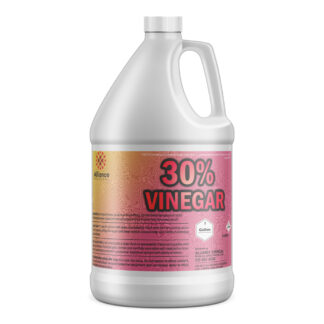 30% Vinegar – Concentrated Industrial Strength$23.00 – $3,200.00
30% Vinegar – Concentrated Industrial Strength$23.00 – $3,200.00
Increasing Alkalinity
If alkalinity dips below the recommended range of 80-120 ppm for pools, you need to raise it to stabilize pH levels. The primary chemical for this is:
- Soda Ash: A reliable choice for increasing alkalinity without significantly impacting pH.
-
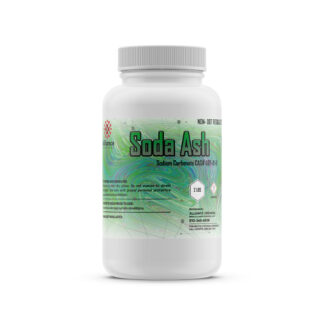 Soda Ash$20.00 – $3,008.00
Soda Ash$20.00 – $3,008.00
Case Scenario: Adjusting pH and Alkalinity
Imagine you’ve tested your pool and found the pH to be at 8.2 (too high) and the alkalinity at 70 ppm (too low).
Step 1: Adjusting pH
Using 30% Vinegar:
Assuming a pool volume of 10,000 gallons, and wanting to reduce the pH from 8.2 to around 7.4, you might start with half a gallon of 30% vinegar. After adding, ensure the water circulates for 2-4 hours and then retest.
Step 2: Raising Alkalinity
With Soda Ash:
To raise the alkalinity from 70 ppm to within the desired range of 80-120 ppm for a 10,000-gallon pool, you might begin with 5 pounds of Soda Ash. Distribute it across the pool, let it circulate for several hours, then retest.
Step 3: Monitor & Adjust
Consistency is key. Continuously monitor the pool’s pH and alkalinity and adjust as needed.
Delving Deeper: A Closer Look at Chemical Choices
Natural Acids vs. Synthetic Solutions
When managing pH, especially in environments where organic solutions are preferred, natural acids like vinegar can be used. However, there’s more to consider:
- Vinegar: It’s a diluted acetic acid, which makes it a mild and environmentally-friendly choice for minor pH adjustments. You can choose between various concentrations, like 10% and 30%, depending on the level of correction needed.
- Hydrochloric Acid: Also known as muriatic acid, it’s a strong acid that can effectively lower pH. However, it’s synthetic and can be aggressive, so handle with care.
-
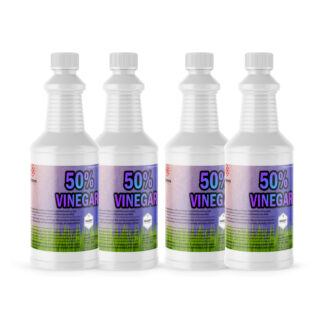 50% Vinegar – Concentrated Industrial Strength$23.00 – $3,600.00
50% Vinegar – Concentrated Industrial Strength$23.00 – $3,600.00 -
 10% Vinegar – Concentrated Industrial Strength$20.00 – $2,800.00
10% Vinegar – Concentrated Industrial Strength$20.00 – $2,800.00 -
 30% Vinegar – Concentrated Industrial Strength$23.00 – $3,200.00
30% Vinegar – Concentrated Industrial Strength$23.00 – $3,200.00 -
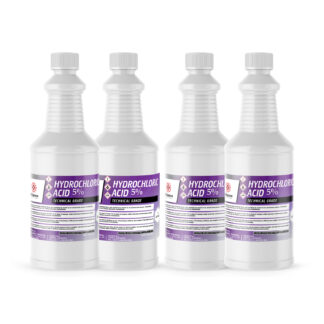 Hydrochloric Acid 5% Technical Grade$20.00 – $3,510.00
Hydrochloric Acid 5% Technical Grade$20.00 – $3,510.00 -
 Hydrochloric Acid 15% Technical Grade$24.00 – $4,185.00
Hydrochloric Acid 15% Technical Grade$24.00 – $4,185.00 -
 Hydrochloric Acid 31% Technical Grade$22.00 – $5,022.00
Hydrochloric Acid 31% Technical Grade$22.00 – $5,022.00
Alkalinity Boosters: Beyond Soda Ash
While Soda Ash is a popular choice for increasing alkalinity, there are alternatives:
- Bicarbonates: Potassium bicarbonate can be used to boost alkalinity. It’s milder than soda ash, making it less likely to spike the pH.
- Boric Acid: In certain conditions, boric acid can both stabilize pH and offer some buffering capacity.
-
 Potassium Bicarbonate – FCC USP Grade$21.50 – $8,396.80
Potassium Bicarbonate – FCC USP Grade$21.50 – $8,396.80 -
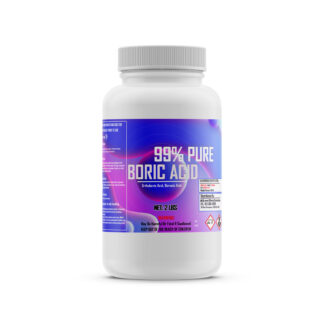 Boric Acid$25.00 – $4,075.52
Boric Acid$25.00 – $4,075.52
Water Purity: The Unsung Hero
Water quality can significantly impact how easily you can balance pH and alkalinity. The purer the water, the fewer contaminants that can interfere with adjustments.
- Deionized Water: Ideal for scenarios where water purity is paramount. It has had most of its mineral ions (like calcium, iron, and copper) removed, making it less likely to tamper with pH levels.
-
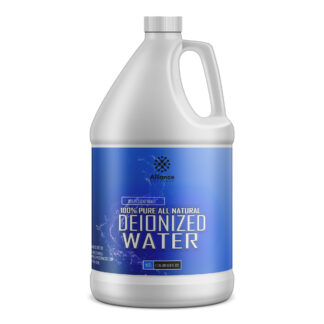 Deionized Water$28.00 – $2,250.00
Deionized Water$28.00 – $2,250.00
Handy Tips and Safety Measures
- Store Chemicals Properly: Ensure chemicals are stored in cool, dry places away from direct sunlight. Some chemicals, like Acetic Acid, should be kept in their original containers and sealed tightly.
- Handle with Care: Always wear protective gloves, eyewear, and clothing when dealing with chemicals. Remember to follow manufacturer’s guidelines for optimal safety.
- Test Regularly: Invest in a reliable pH and alkalinity testing kit. Regular testing helps you catch imbalances early before they escalate.
- Stay Informed: Continually educate yourself about the latest products and best practices in pH and alkalinity management. Remember, what worked a decade ago might have better alternatives today.
Wrapping Up
Balancing pH and alkalinity is a delicate dance that requires precision, patience, and the right products. By understanding the basics and having top-notch products from Alliance Chemical at your disposal, you’re well-equipped to tackle any water imbalance challenges.
Always ensure safety guidelines are followed when handling chemicals and consult product guidelines or experts when in doubt.
Disclaimer: The case scenario provided is a hypothetical example. Actual dosages may vary based on various factors like pool/spa size, starting pH, and alkalinity levels. Always consult with a pool/spa professional before adding chemicals.




